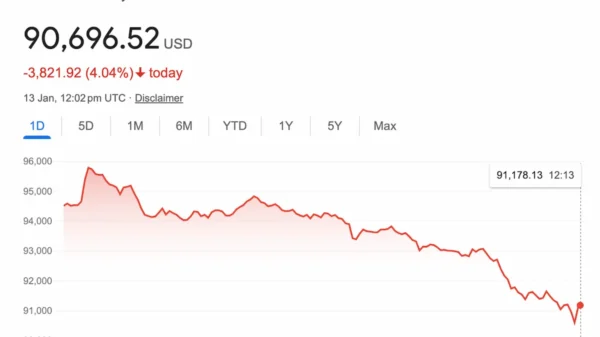Excel is a powerful tool, essential for data analysis, reporting, and productivity in various fields. Mastering Excel formulas can significantly boost your efficiency and effectiveness. In this article, we’ll cover 15 important Excel formulas, demonstrate how to use them with step-by-step instructions, and provide industry-specific examples to illustrate their applications.
Top 15 Everyday Excel Formulas with Examples
1. SUM
Scenario: Summing Sales Data in Retail
- Problem: You have a list of daily sales figures for the month, and you need to calculate the total sales for the month.
- Solution: Use the SUM formula to add up all the daily sales figures.
Step-by-Step Guide:
- Select the cell where you want the total sales to appear.
- Type
=SUM(. - Highlight the range of cells containing the daily sales figures.
- Close the parenthesis
). - Press Enter.
Example:
A1: 200
A2: 300
A3: 400
...
A30: 500
In another cell:
=SUM(A1:A30)
Output:
9000
2. AVERAGE
Scenario: Calculating Average Test Scores in Education
- Problem: A teacher needs to find the average score of students in a class.
- Solution: Use the AVERAGE formula to calculate the mean score.
Step-by-Step Guide:
- Select the cell where you want the average score to appear.
- Type
=AVERAGE(. - Highlight the range of cells containing the students’ scores.
- Close the parenthesis
). - Press Enter.
Example:
B1: 85
B2: 90
B3: 78
...
B30: 92
In another cell:
=AVERAGE(B1:B30)Output:
85.53. IF
Scenario: Determining Eligibility for Bonuses in Finance
- Problem: A company wants to determine which employees are eligible for a bonus based on their performance scores.
- Solution: Use the IF formula to check if performance scores meet the bonus criteria.
Step-by-Step Guide:
- Select the cell where you want the result to appear.
- Type
=IF(. - Enter the condition (e.g.,
C1>80). - Type
,and enter the value if true (e.g.,"Eligible"). - Type
,and enter the value if false (e.g.,"Not Eligible"). - Close the parenthesis
). - Press Enter.
Example:
C1: 85
In another cell:
=IF(C1>80, "Eligible", "Not Eligible")
Output:
Eligible4. VLOOKUP
Scenario: Finding Product Prices in Inventory Management
- Problem: A retail store needs to find the price of a product based on its product ID.
- Solution: Use the VLOOKUP formula to search for the product ID and return the corresponding price.
Step-by-Step Guide:
- Select the cell where you want the price to appear.
- Type
=VLOOKUP(. - Enter the lookup value (e.g.,
D1). - Type
,and enter the table array (e.g.,A1:B100). - Type
,and enter the column index number (e.g.,2). - Type
,and enterFALSEfor an exact match. - Close the parenthesis
). - Press Enter.
Example:
D1: 102
A1: 101 | B1: 20
A2: 102 | B2: 25
A3: 103 | B3: 30
In another cell:
=VLOOKUP(D1, A1:B3, 2, FALSE)
Output:
255. HLOOKUP
Scenario: Finding Quarterly Sales Data in Business Analytics
- Problem: A business analyst needs to find sales data for a specific quarter.
- Solution: Use the HLOOKUP formula to search for the quarter and return the corresponding sales data.
Step-by-Step Guide:
- Select the cell where you want the sales data to appear.
- Type
=HLOOKUP(. - Enter the lookup value (e.g.,
E1). - Type
,and enter the table array (e.g.,A1:D2). - Type
,and enter the row index number (e.g.,2). - Type
,and enterFALSEfor an exact match. - Close the parenthesis
). - Press Enter.
Example:
E1: Q2
A1: Q1 | B1: Q2 | C1: Q3 | D1: Q4
A2: 1000 | B2: 1500 | C2: 2000 | D2: 2500
In another cell:
=HLOOKUP(E1, A1:D2, 2, FALSE)
Output:
15006. CONCATENATE
Scenario: Creating Full Names in HR
- Problem: An HR manager needs to create a full name column by combining first and last names.
- Solution: Use the CONCATENATE formula to join the first and last names.
Step-by-Step Guide:
- Select the cell where you want the full name to appear.
- Type
=CONCATENATE(. - Enter the first text string or cell reference (e.g.,
F1). - Type
,and enter a space in quotes (" "). - Type
,and enter the second text string or cell reference (e.g.,G1). - Close the parenthesis
). - Press Enter.
Example:
F1: John
G1: Doe
In another cell:
=CONCATENATE(F1, " ", G1)
Output:
John Doe
7. COUNT
Scenario: Counting Orders in Sales
- Problem: A sales manager needs to count the number of orders received.
- Solution: Use the COUNT formula to count the number of cells that contain numbers.
Step-by-Step Guide:
- Select the cell where you want the count to appear.
- Type
=COUNT(. - Highlight the range of cells containing the order numbers.
- Close the parenthesis
). - Press Enter.
Example:
G1: 101
G2: 102
G3: Order 3
G4: 104
In another cell:
=COUNT(G1:G4)
Output:
3
8. COUNTA
Scenario: Counting Employees in HR
- Problem: An HR manager needs to count the number of employees listed in a spreadsheet.
- Solution: Use the COUNTA formula to count the number of non-empty cells.
Step-by-Step Guide:
- Select the cell where you want the count to appear.
- Type
=COUNTA(. - Highlight the range of cells containing employee names.
- Close the parenthesis
). - Press Enter.
Example:
H1: Alice
H2: Bob
H3:
H4: Charlie
In another cell:
=COUNTA(H1:H4)
Output:
3
9. MIN
Scenario: Finding the Lowest Temperature in Weather Data
- Problem: A meteorologist needs to find the lowest temperature recorded in a week.
- Solution: Use the MIN formula to find the smallest number in a range.
Step-by-Step Guide:
- Select the cell where you want the minimum value to appear.
- Type
=MIN(. - Highlight the range of cells containing temperature data.
- Close the parenthesis
). - Press Enter.
Example:
I1: 68
I2: 72
I3: 65
I4: 70
In another cell:
=MIN(I1:I4)
Output:
65
10. MAX
Scenario: Finding the Highest Score in a Sports Competition
- Problem: A sports coach needs to find the highest score among participants.
- Solution: Use the MAX formula to find the largest number in a range.
Step-by-Step Guide:
- Select the cell where you want the maximum value to appear.
- Type
=MAX(. - Highlight the range of cells containing scores.
- Close the parenthesis
). - Press Enter.
Example:
J1: 85
J2: 90
J3: 88
J4: 92
In another cell:
=MAX(J1:J4)
Output:
92
11. SUMIF
Scenario: Summing Sales Over a Certain Amount in Retail
- Problem: A retail manager wants to sum all sales transactions that are greater than $100.
- Solution: Use the SUMIF formula to add cells that meet a specified condition.
Step-by-Step Guide:
- Select the cell where you want the sum to appear.
- Type
=SUMIF(. - Enter the range of cells to be evaluated by the criteria (e.g.,
A1:A30). - Type
,and enter the criteria (e.g.,">100"). - Close the parenthesis
). - Press Enter.
Example:
A1: 50
A2: 150
A3: 200
...
A30: 120
In another cell:
=SUMIF(A1:A30, ">100")
Output:
670
12. AVERAGEIF
Scenario: Averaging Scores Above a Threshold in Education
- Problem: A teacher wants to find the average score of students who scored more than 70.
- Solution: Use the AVERAGEIF formula to average cells that meet a specified condition.
Step-by-Step Guide:
- Select the cell where you want the average to appear.
- Type
=AVERAGEIF(. - Enter the range of cells to be evaluated by the criteria (e.g.,
B1:B30). - Type
,and enter the criteria (e.g.,">70"). - Close the parenthesis
). - Press Enter.
Example:
B1: 60
B2: 75
B3: 80
...
B30: 90
In another cell:
=AVERAGEIF(B1:B30, ">70")
Output:
81.25
13. SUMPRODUCT
Scenario: Calculating Total Revenue in Sales
- Problem: A sales analyst needs to calculate the total revenue from the quantity sold and price per unit.
- Solution: Use the SUMPRODUCT formula to multiply corresponding items and sum the products.
Step-by-Step Guide:
- Select the cell where you want the total revenue to appear.
- Type
=SUMPRODUCT(. - Enter the first array (e.g.,
A1:A10for quantity sold). - Type
,and enter the second array (e.g.,B1:B10for price per unit). - Close the parenthesis
). - Press Enter.
Example:
A1: 10 | B1: 5
A2: 15 | B2: 6
A3: 20 | B3: 7
...
A10: 25 | B10: 10
In another cell:
=SUMPRODUCT(A1:A10, B1:B10)
Output:
925
14. LEFT/RIGHT/MID
Scenario: Extracting Part of a Product Code in Manufacturing
- Problem: A manufacturer needs to extract specific parts of a product code for analysis.
- Solution: Use LEFT, RIGHT, and MID formulas to extract text from a string.
Step-by-Step Guide:
- LEFT
- Select the cell where you want the result to appear.
- Type
=LEFT(. - Enter the text string or cell reference (e.g.,
C1). - Type
,and enter the number of characters to extract from the left (e.g.,5). - Close the parenthesis
). - Press Enter.
- RIGHT
- Select the cell where you want the result to appear.
- Type
=RIGHT(. - Enter the text string or cell reference (e.g.,
C1). - Type
,and enter the number of characters to extract from the right (e.g.,5). - Close the parenthesis
). - Press Enter.
- MID
- Select the cell where you want the result to appear.
- Type
=MID(. - Enter the text string or cell reference (e.g.,
C1). - Type
,and enter the starting position (e.g.,2). - Type
,and enter the number of characters to extract (e.g.,5). - Close the parenthesis
). - Press Enter.
Example:
C1: PROD12345
LEFT example:
=LEFT(C1, 4)
Output: PROD
RIGHT example:
=RIGHT(C1, 5)
Output: 12345
MID example:
=MID(C1, 5, 3)
Output: 123
15. INDEX-MATCH
Scenario: Finding Employee Information in HR
- Problem: An HR manager needs to find an employee’s department based on their employee ID.
- Solution: Use the INDEX-MATCH formula to search for the employee ID and return the corresponding department.
Step-by-Step Guide:
- Select the cell where you want the result to appear.
- Type
=INDEX(. - Enter the array from which you want to return a value (e.g.,
A1:A10for departments). - Type
,and use the MATCH function:- Type
MATCH(. - Enter the lookup value (e.g.,
D1for employee ID). - Type
,and enter the lookup array (e.g.,B1:B10for employee IDs). - Type
,and enter0for an exact match. - Close the parenthesis
).
- Type
- Close the parenthesis
). - Press Enter.
Example:
D1: 102
A1: HR
A2: IT
A3: Sales
B1: 101
B2: 102
B3: 103
In another cell:
=INDEX(A1:A3, MATCH(D1, B1:B3, 0))
Output:
IT
Summary
Mastering these essential Excel formulas can significantly boost your efficiency in managing and analyzing data across various industries. Use this guide to familiarize yourself with important Excel functions and improve your proficiency in handling everyday tasks. By understanding and implementing these formulas, you can make your work in Excel more effective and productive.








































